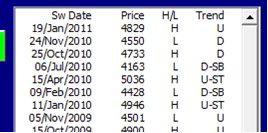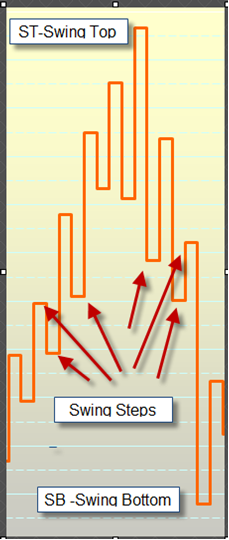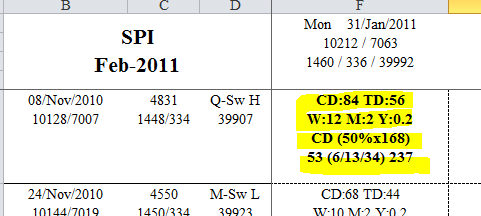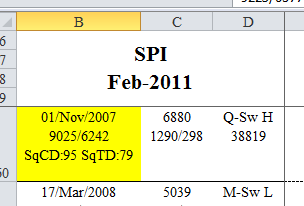


Documentation Brochures Examples Disclaimer Privacy WD Gann
NEWSLETTER
Join our mailing list and stay in touch with the latest GATE news and research
![]()
Download Brochure
Frequently Asked Questions and Questions Raised during GATE Foundations Webinar's
Web001: GATE Setup and Insert/update Markets | ||
Q: When will recordings be available? | ||
Recording will be available as soon as possible after the second webinar has been completed. The target is to have them available within 24 hours – but that may not always be possible. An email will be sent to all Registered participants when they are available.
| ||
Q: Does GATE remember the Historical Data – or Do we need to import it each time? | ||
Yes. You only need to enter the Data once. GATE will save this Data and merge it with any additional data that you supply. | ||
Manual Corrections get 1st priority | ||
This will ensure that the Latest corrections or OED Data is used
| ||
Q: Am I allowed to Run GATE on my Laptop as well as my desktop simultaneously? | ||
Yes. GATE registration allows you to GATE on a Desktop as well as a Laptop | ||
Q: How do I change the Date Format from Profit Source to GATE and visa-versa | ||
You should not have to change Dates. GATE uses the date format that you have set in your Regional Settings in your computer. If the EOD data you are trying to use to update GATE has a different Date format – then please use the Import method to update your Data. In the Import method you can specify the Date format of your EOD data if it is different to your Regional settings | ||
Q: Please show what is stored in the Market Folder | ||
You can see the Workbooks that are saved in the Market folder by looking at the Folder contents on your computer. | ||
Q: When I start GATE I get an error. What do I do | ||
Please contact me if you have any problems with GATE. | ||
Excel not being up to date – Run Microsoft Program Update
| ||
Q: Can we use 4 hour intra day data | ||
No. GATE only works on EOD data at this stage. | ||
Q: Microsoft Updates required. | ||
It is important to keep Microsoft Office updated. For Office 2007 – please ensure that Office SP2 has been installed. | ||
Web002: Risk Reward Calculator and Price Fluctuation Cards | ||
Q: Please explain letters in 4th Col | ||
The 4th Col referred to is the Swing information that is displayed in the Swing Selections list.
In the codes: Q-U, M-ST, W-SB, W-D, etc. | ||
Q=Major (Quarterly) swings | ||
The second character refers to whether this is a Swing Step or a Turning Point (Swing Top or Bottom). They are all Swings – however, I am differentiating between the Swing Steps leading into a Turn in the Market and Swing Tops and Bottoms that turn the market. | ||
ST (Swing Top) is a Turning Point that occurs when the previous swing step bottom has been taken out.
| ||
Q: How often do you update your data while using GATE | ||
GATE uses EOD (End of Day) Data. EOD of Day data normally consists of Date, Open, High, Low, Close, Volume and Open Interest. | ||
Q: When using the Risk Reward Calculator – Can I look at my chart as well | ||
It is strongly recommend that you always use a chart in conjunction with GATE. GATE does not replace a charting package. GATE is a toolkit to assist you with your analysis. | ||
Web003: GANN Fan, Trend line, Price Clusters using Retracements and Projections | ||
Q: Can you analyze Zero angles as well | ||
In Module 5 we look at Zero degree date analysis | ||
Q: Can GATE do GANN Fan in Trading Days | ||
GATE does a number of functions in both Calendar days and Trading Days. At this point GATE does not do the GANN Fan in Trading Days – but I will include it in the near future – most probably at the conclusion of the Webinars | ||
Q: Can we customize the Projection Percentages | ||
I have included (and added a few more) the standard 1/8th increments for the GANN angles and the standard set of Fibonacci angles. | ||
Web004: Seasonal Date Calendar, Day Count Calendar | ||
Q: Can GATE handle Public Holidays | ||
GATE does have a Public Holiday facility but I have not mentioned it in any of the documentation. | ||
Q: There are different Public Holidays in different Countries | ||
Yes. A Separate Public Holiday Calendar is kept for each market so that the Client can enter the Public Holiday information for that market. | ||
Q: Are Trading Days NYSE or Australia | ||
GATE calculates a Trading Day as any day for which it finds data, otherwise it is considered to be a Public Holiday or Weekend (or the market is closed). The Country in which the Market operates does not have any influence in the Trading Days. | ||
Q: Do you have a Calendar for Public Holidays so that Trading Days forward work accurately | ||
Yes – this will be fully implemented in future releases of GATE. See answer above. | ||
Q: Some Data suppliers constantly ignore Public Holidays – they repeat the Data of the Day before into the Public Holiday. Can GATE Filter out these errors | ||
GATE does not filter or do any data validation (except to check that the date format is correct). However, I can see that this would be worthwhile considering once I complete the Public Holiday implementation. I will include this as an option in the Data Management Function in the near future | ||
Q: If working with forex data what do you suggest as the start date used for the first section where you explained "seasonal calendar section" | ||
Either use the Birth date or if that is not known or does not exist – then use the Dare of the first Data Bar (GATE will do this automatically by default). | ||
Q: Why is a Sunday considered a trading day | ||
It is not – GATE will accept ANY data – it does NOT do any data validation. | ||
Q: Can the Gann date column be color coded eg Green, Yellow, Red - this would make reading the calendars easier to read | ||
Formatting spread sheets takes up an enormous amount of computer resources. It is easy enough to code, however, to my surprise, whenever I look at performance – it always seems to be in the formatting that takes a lot of computer time and resources.. | ||
Q: Any chance of being able have GATE use new moon full moon and eclipses | ||
This answer is the same as with the Public Holidays. It is actually already in GATE – I will update the documentation and do final test. | ||
Q: Can you please explain what this information is on the Selected Turning Points in the Day Count Calendar. | ||
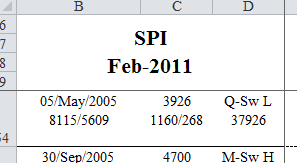
GANN teaches that you should maintain a Day Count for significant turns in the Market. This is normally done on a hand drawn chart and takes a lot of time and effort to keep this up to date. If you do maintain this count - then of course you can highlight future cycles on your chart.
| ||
3926: Price of the Turning Point | ||
Q: Can you please tell me what these numbers are in the Detail of the Day Count Calendar. | ||
. Please read this answer in conjunction with the answer to the Question above
| ||
CD:84: The Calendar Day Count - From when the Turning Point was made to this future Date (31Jan2011) is 84 Calendar days | ||
Q: Why are some Turning Point painted Yellow on the Day Count Calendar?. | ||
. Please read this answer in conjunction with the answer to the Question above
| ||

